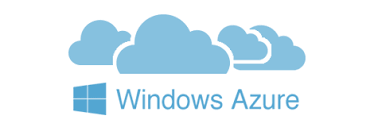Cloud: Windows Azure – SQL Data Service
Microsoft’s Cloud Computing platform, which is of the Application/Platform (Saas/PaaS) type, has an interesting service, SQL Data Service (SDS), represents a cloud-based relational database developed with SQL Server 2008 technology of which I recommend to see the presentation in silverlight.

Through SDS it is possible to easily use an RDBMS relational database (such as SQL Server) taking advantage of the global distribution of Microsoft datacenters intended for the development of the Azure project, therefore availability, scalability and security.
SQL Data Service Features
- Creating, accessing and manipulating tables, views, indexes, roles, stored procedures, triggers and functions
- Insert,Update, and Delete
- Constraints
- Transactions
- Temp tables
- Query support
- Basic functions (aggregates, math, string, date/time)
- A subset of the existing SQL built-in stored procedures and system views
- Ado.Net
- ODBC
- PHP
- Support for running SQL configuration scripts via SQLCMD and SQL Query Analyzer from within SQL Server Management Studio
- Support for Visual Studio and SQL Server Management Studio
- Support for SQL Server Management Studio, SQL Server PowerShell and programmatic access via SQL Server Management Objects (SMO)
- Support for friction free provisioning of Logical Servers and Databases through the SQL Data Services account portal
- SDS supports the SQL authentication modelRedundant copies of user database
- User authenticated by standard SQL logins
- Login map to user inside the database
- Current SQL USER and ROLE mechanisms continue to work with the database. GRANT/DENY/REVOKE permissions of SQL objects to USER/ROLE
- Redundant copies of user databases for fast failover and high availability in case of failure
- Automatic load balancing for optimal resource utilization and performance
- Scale out with multiple databases and partition-aware application
- Automatic system backup for data protection
- A subset of existing SQL manageability facilities will be available
As you can see from the list of features, it is like having installed your own SQL Server database network server and administering it with the usual tools (Management Server, SQL Analyzer, Visual Studio) using all the classic features of a SQL Server (functions, views, stored procedures, tables, indexes. transactions, etc.), but with the power and reliability of a scalable Cloud Computing infrastructure.

Obviously, it is unthinkable to use this service without supporting our SW interfaces to other Windows Azure services such as .NET Services because the lantence of the internet would make you lose the advantages of using a Cloud Based RDBMS, while being in the same datacenters with dedicated connectivity, you have the maximum advantage in performance.
For now, the service is limited for each user to a database of a maximum of 10GB, which is not little, the payment model is the classic pay-as-you-go one.
It is certainly a very professional service and is at the forefront among the current database services in the Cloud, it would be to be tested for large portals with a lot of traffic.
